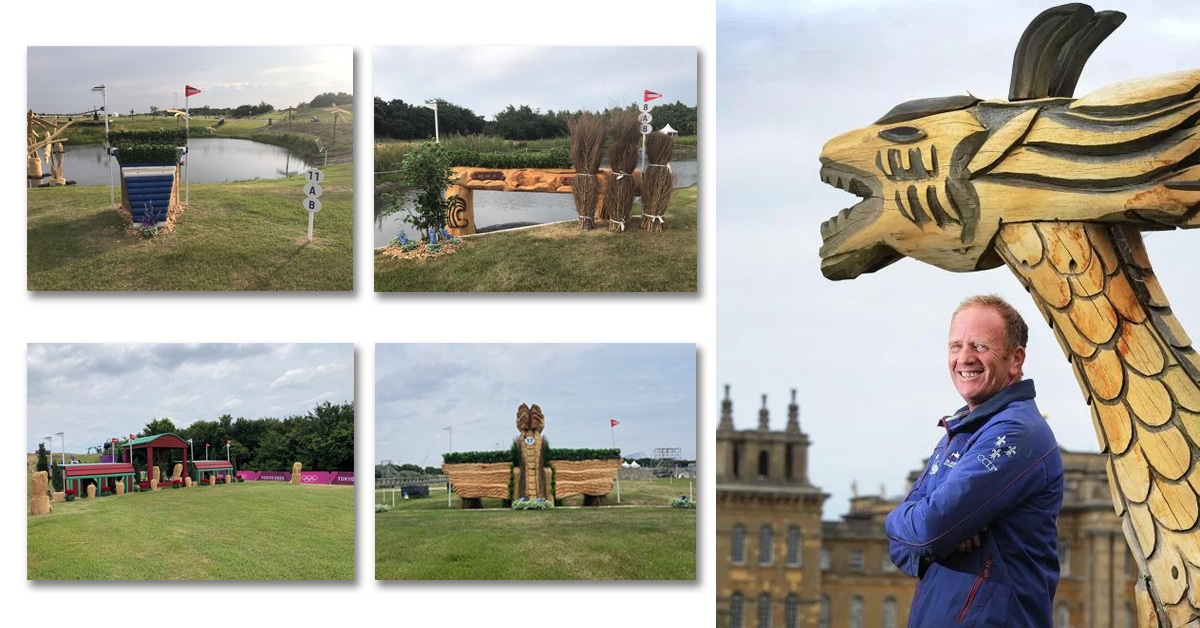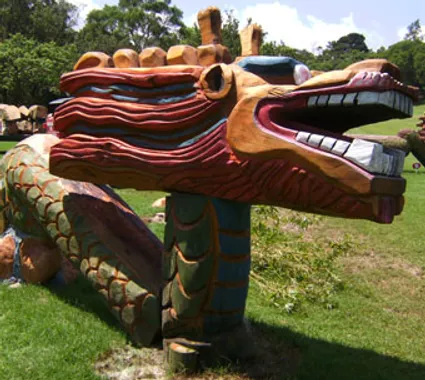If you build it, they will come…
Once the embargo lifted and images of cross-country fences began flowing out of Sea Forest’s “eventing island’ in the waters south of Tokyo this week, the consensus is that they are big, beautiful and fitting for an event of this lofty stature.
While American Derek di Grazia designed the awe-inspiring Olympic course, the man behind the construction is David Evans of the UK. His team, headed up by Carl Fletcher and Mike Pope, have built previously for designers including Captain Mark Phillips, Ian Stark, Eric Winter and Mike Etherington-Smith. Evans has also designed his own courses at Chatsworth, Bramham, Luhmuhlen, Gatcombe, and Blenheim, among others. He is no stranger to the challenges of Olympic tracks either, having built the Etherington-Smith-designed cross-country fences at the 2008 Olympics in Hong Kong. His company EvansJumps specializes in solid, safe obstacles, gorgeous bespoke chainsaw-carved animals, and even portable XC fences.
(Watch Dave in action wielding a chainsaw at Blenheim Palace:)
https://www.facebook.com/watch/?v=1481458288571208
But going farther back, some of Evans’ early days in the business took place right here in Canada. “I did some building at Bromont and Checkmate in the early ’90’s, and it was great fun,” he recalls. “I built for Mark Phillips and Mike Etherington-Smith out there; there was always a lot of great cedar to work with! I used to spend about three months a year in Canada. It was at Checkmate I first met [Canadian course builder and designer] Jay Hambly.”
“I also design up to four-star myself so it’s often easier to work with designers and understand mostly what they want. I also like to make it interesting for the sponsors and public.”
Tokyo has posed a number of questions, and not the least being dealing with the oppressive heat and humidity. “The challenges include the weather, location, language barrier, and trying to find local materials in a city” Evans says. “Mostly trying to understand what is available and easy to get hold of without too much expense. In Tokyo it was built on site about 25 per cent and the rest were exported from the UK, only because it was easier to find the wood locally to ship to our workshop and carve at home because of all the tools we have, and then ship the finished article over.”
The unprecedented delay in holding these Games thanks to the Covid-19 epidemic meant that there had to be some changes to the scheduling; for example, by March of 2020 all the fences were in place, but by the time the team returned to the UK later that month, everything was on lockdown. Even getting back to check on the course was impossible for quite a long time because of travel restrictions. Tokyo officials were then tasked with covering some of the wooden carvings with tarps to protect them from the weather, and the fences at the water obstacles were pulled out so they wouldn’t rot.
Despite the difficult conditions leading up to these Games, Evans is confident the course will be well-received and well-ridden. “We try and make every fence readable for the horses so they jump well; it’s then up to the athletes to avoid the run-outs!”
He did, however, decline to identify a ‘favourite’ fence among the 23 elements and combinations themed around Japanese heritage. “I think this time most of the fences tell a story and the whole course has a meaning, so it’s difficult to have a favourite. To build a project like this is about having a great team around you.”


